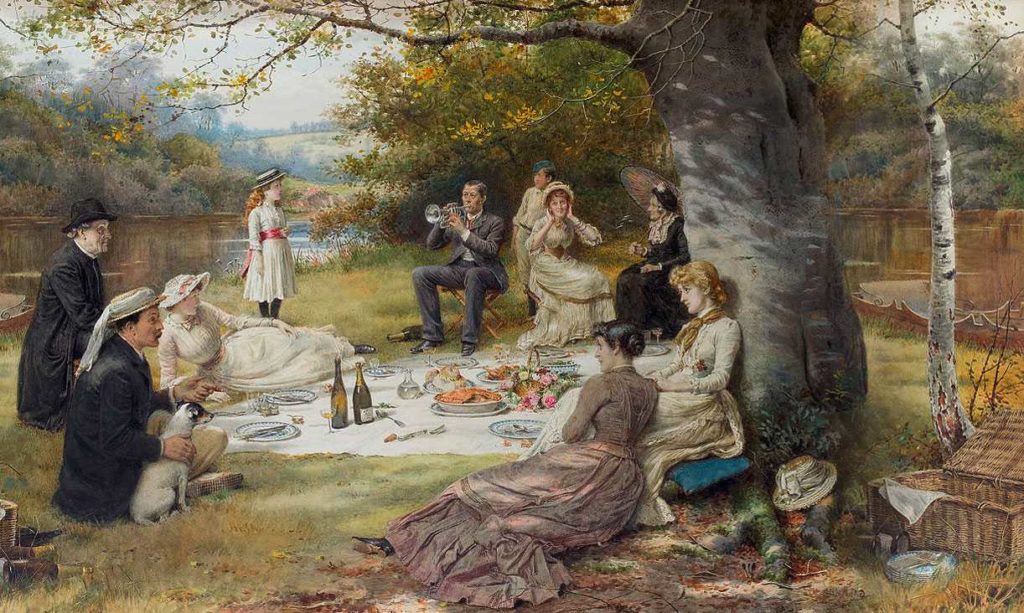Culture of dining
Since ancient times, the culture of dining has been directly linked to all areas of social life. It includes not only respect for table manners and etiquette. Today, as in the past, the culture of dining includes the cultivation of tradition, the careful preparation of a festive table, and the luxury of taking time for togetherness and the enjoyment of food.

Pleasure and fine etiquette
From the festive stagings of antiquity and the Middle Ages to the glittering tables of grand hotels and luxury liners to the noble star kitchens and gourmet restaurants, the culture of dining has evolved steadily over the centuries, as has the way in which it is celebrated. The culture of dining was particularly shaped by the noble courts, which for centuries saw themselves as a place of fine manners and special enjoyment.
“A good table is the first bond of good company.”
Luc de Clapiers, Marquis de Vauvenargues (1715 – 1747)

Glamorous parties and luxurious tables
As a glance at history shows, life in the time of Louis XIV was rich in privations for many people, but also too short to escape the glamorous feasts and games of that era. For the nobility, eating only for the sake of satiety was considered to be merely a way of satisfying the needs of the common people. In noble circles, meals often served as an occasion for festive self-expression. Guests and their entourage were treated to sumptuous performances, which were supplemented by hunts, dances, theatrical performances and impressive fireworks displays.

Splendor and pomp in Moritzburg, Saxony
During the early 18th century, the Dresden court under Elector Friedrich August I (Augustus the Strong) in particular was considered one of the most splendid in Europe. Whether in the Moritzburg hunting lodge or the Pillnitz pleasure palace, Augustus the Strong celebrated lavish parties with his court, which were supplemented by amusements of all kinds. Even before the guests arrived, sumptuous tables were laid and festively decorated. The Elector commissioned precious porcelains, paintings and one of the largest trophy collections in Europe to showcase the splendor and magnificence of courtly table culture.

Outdoor dining pleasure
In the later 18th century, the desire for courtly table culture also took hold of the upper middle classes. Festive tables and lavish picnics with the finest porcelain and silver cutlery became a symbol of bourgeois prosperity, especially in England and France. They mark the beginning of an elegant leisure culture and at the same time testify to the search for harmony and the endeavor to create an image of the lost paradise. With the increasing mobility and wanderlust of the citizens, the luxury of special dining pleasures also moved into the railroads, grand hotels and passenger ships. To furnish the upscale restaurants, selected manufactories were commissioned to supply silverware of the highest jeweler’s quality and with a special shine.
Variety of enjoyment
Especially in today’s world, which is characterized by technological progress and fast-paced life, we like to come to rest, linger and reflect on the traditional values of our grandparents and their ancestors during a shared meal. So today the culture of dining is celebrated in a variety of festive ways, from the glamorous wedding table to the exclusive dinner on the private yacht to the festive dinner in white.
As a renowned manufacturer of the finest silverware, Wellner has helped shape the development of the culture of dining for over 160 years and carries the splendor of Saxon craftsmanship to the most sophisticated tables in the world. In this way, Wellner continues the long tradition and stands for a stylish and enjoyable approach to the everyday – for more joie de vivre and pleasure.


If a people’s culture of taste is most clearly indicated by the appearance of those things that they use on a daily basis, the modern movement that promises to bring art and industry closer together and its desire to expand the reach of taste should be turning its attention more to what is on people’s tables.
Peter Behrens (1868 – 1940)
